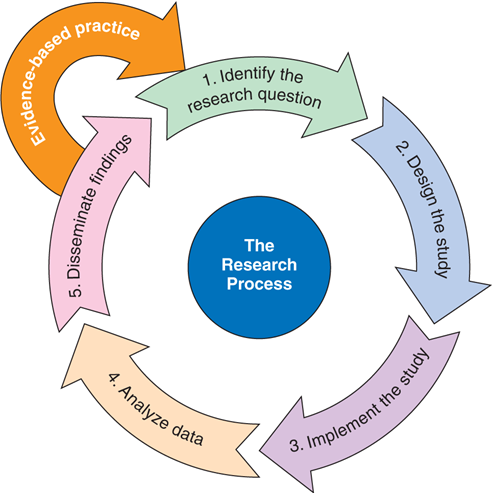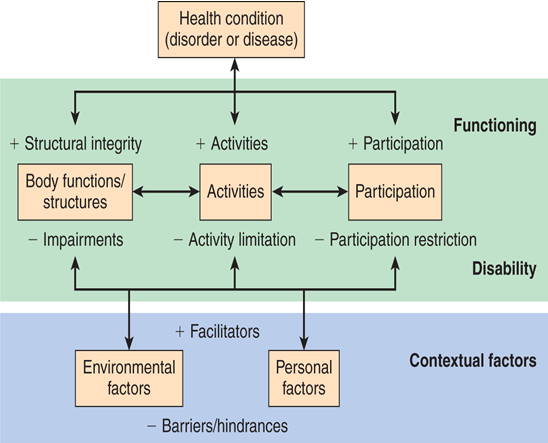Research Methods I: Class 1
1/15
There's no tags or description
Looks like no tags are added yet.
Name | Mastery | Learn | Test | Matching | Spaced |
|---|
No study sessions yet.
16 Terms
Compare AOTA’s Centennial Vision and Vision 2025 with respect to Evidence Based Practice
Centennial Vision | Vision 2025 | |
-powerful -widely recognized -science-driven, evidence-based -diverse -globally connected -meeting occ. needs | -health, well-being, QOL -all people, pops., communities -effective solutions -facilitate participation | |
directly mentions EBP | EBP not explicitly stated |
Compare different levels of academic degrees in OT (OTD vs Master’s Degree)
Entry-level OTD has additional ACOTE requirements over a master’s degree prepared OT (completion of a doctoral capstone)
the doctoral capstone goal: provide an in-depth exposure to one or more of the following areas in OT: clinical skills, research skills, administration, program development and evaluation, policy development, advocacy, education, leadership
Compare different levels of academic degrees in OT (E-OTD vs PP-OTD)
E OTD | PP-OTD | |
-regulated by ACOTE -started by student with bacc. degree -doesn’t really change practice, learn more about culture of practice and research but not actually doing the research | -not regulated by ACOTE -started by OTR -more valuable?? usually online and can do at your leisure; masters first gives option of pick doctoral concentration later on | |
Compare different levels of academic degrees in OT (EdD vs PhD)
EdD | PhD | |
-designed for practitioners who want to pursue roles as education or mission-driven leaders -curriculum is not standardized; each program may be different in its focus | -terminal degree best suited for individuals who was a career in academia or at the university level -more theoretical approach to learning, which involves publishing original research -more research and scholarship; very rigorous and takes a long time | |
Identify examples of research foci in different areas of OT
practice
academia and research
hospitals
mental and behavioral health
school setting
home and community settings
long-term care
outpatient
early intervention
Describe the role and function of the American Occupational
Therapy Foundation (AOTF)
organization that looks to advance the science of OT to support people’s full participation in meaningful life activities through:
building research capacity in OT
building infrastructure to support research dissemination
establishing partnerships between researchers and practitioners
and strengthening AOTF leadership in the OT enterprise
also envisions a vibrant science that builds knowledge to support effective, evidence-based OT
Explain AOTA and AOTF research priorities
AOTF announced research priorities in 2015
future initiatives will address:
health promotion, prevention and management of chronic conditions
mental health and well-being
technology and environmental supports in home and community
development and transitions for individuals and families
equitable access and use of health and community services
family and caregiver supports, resiliency, and well-being
novel practice areas and approaches to service delivery
Identify the main types of journals that publish research in OT
AOTA home journal: American Journal of Occupational Therapy (AJOT); highest ranked journal in field of OT
AOTF home journal: Occupational Therapy Journal of Research (OTJR)
goes beyond these 2 publications; we have an interdisciplinary reach
important to seek research publications outside of our profession
Describe the purpose of clinical/practice research
ultimate goal: maximize the effectiveness of practice
does what we do work? Or does it only work for certain groups?
necessity for generating and applying evidence to clinical practice through rigorous and objective analysis and inquiry
Discuss the “triple aim” approach to promoting EBP for OT
developed to frame better ways to provide healthcare while reducing costs
goals of triple aim:
improving the individual experience of care
improving the health of populations
reducing the per capita costs of care for populations

Describe how quantitative and qualitative research differ and how they complement each other
Quantitative Research | Qualitative Research | Compliment each other? |
-based on philosophy of logical positivism, in which human experience is assumed to be based on logical and controlled relationships among defined variables -involved measurement of outcomes using numerical data under standardized conditions | -strives to capture naturally occurring phenomena, following a tradition of social constructivism -themes, words, understanding different types of narratives | inform each other regarding development of each other’s findings |
advantage: ability to summarize scaled and to subject data to statistical analysis -OT skilled in quantitative | -OS primarily uses qualitative |
Describe the steps of the research process

Discuss the role of evidence in clinical decision making
the concept of EBP represents the fundamental principle that the provision of quality care will depend on our ability to make choices that are based on the best evidence currently available
evidence is used to discern intervention efficacy, understanding health, or other areas of concern
Discuss components of the ICF and how they influence research questions
ICF acknowledges that occupations are at the heart of a person’s health
contextual factors (environmental and personal factors) can limit doing
influences research by focusing on how ICF elements do or do not interact with specific types of health conditions

Explain the role of interprofessional research to OT
members of multiple professions working together, contributing their various skills in an integrative fashion, sharing perspectives to inform decision making
developing skills and knowledge beyond our own OT discipline to make a positive impact on the progression of health education, service delivery, and policy implementation
Describe the purpose of explanatory, exploratory, and descriptive research
explanatory: utilizes various types of experimental designs to compare 2 or more conditions or interventions; different design approaches offer varied levels of control to establish cause and effect between interventions and outcomes; trials address both efficacy and effectiveness
exploratory: observational designs are used to examine a phenomenon of interest and explore its dimensions, often in populations or communities, and to examine how it relates to other factors
descriptive: researcher attempts to describe a group of individuals on a set of variables, to document their characteristics; may involve the use of questionnaires, interviews, direct observation, or the use of databases